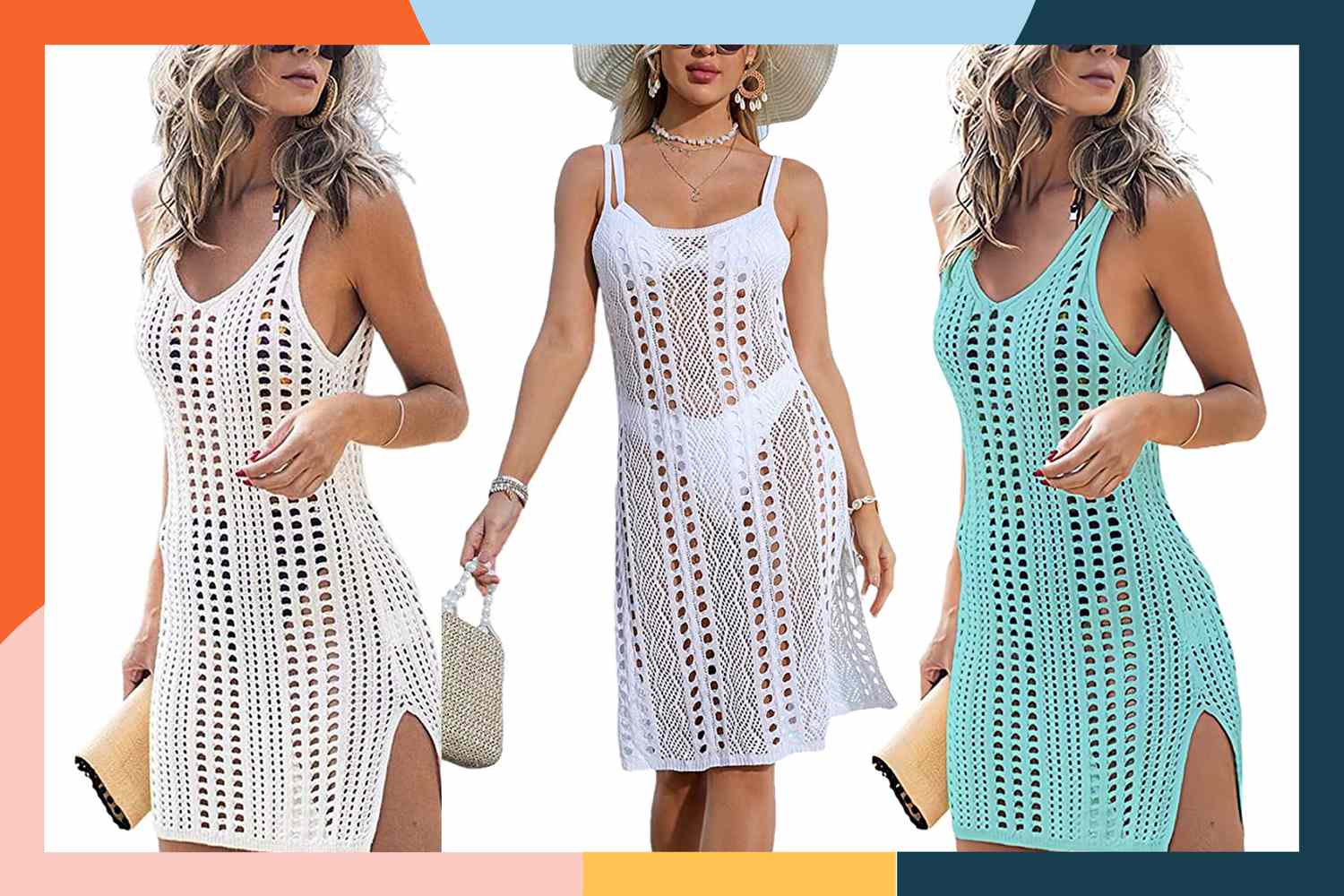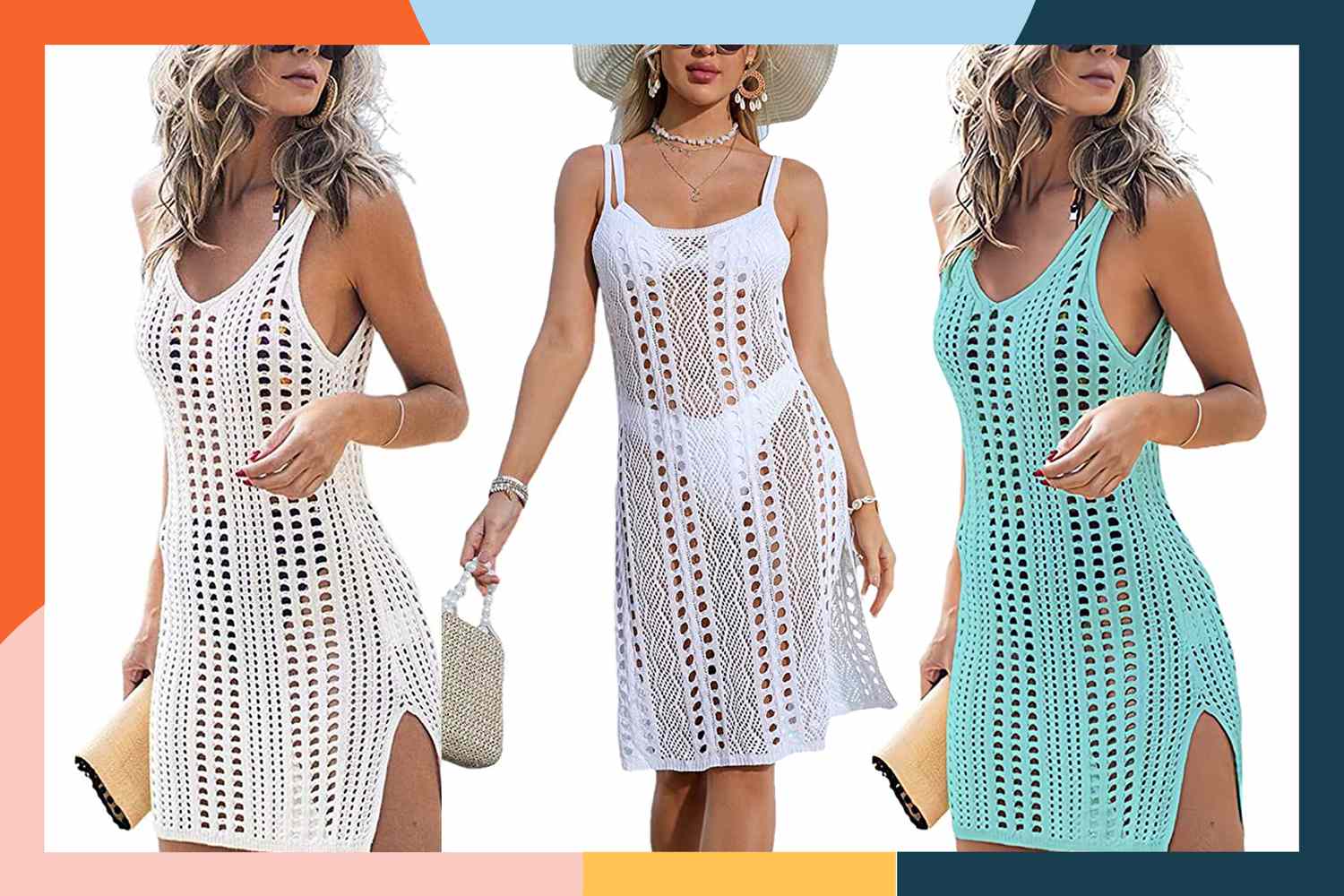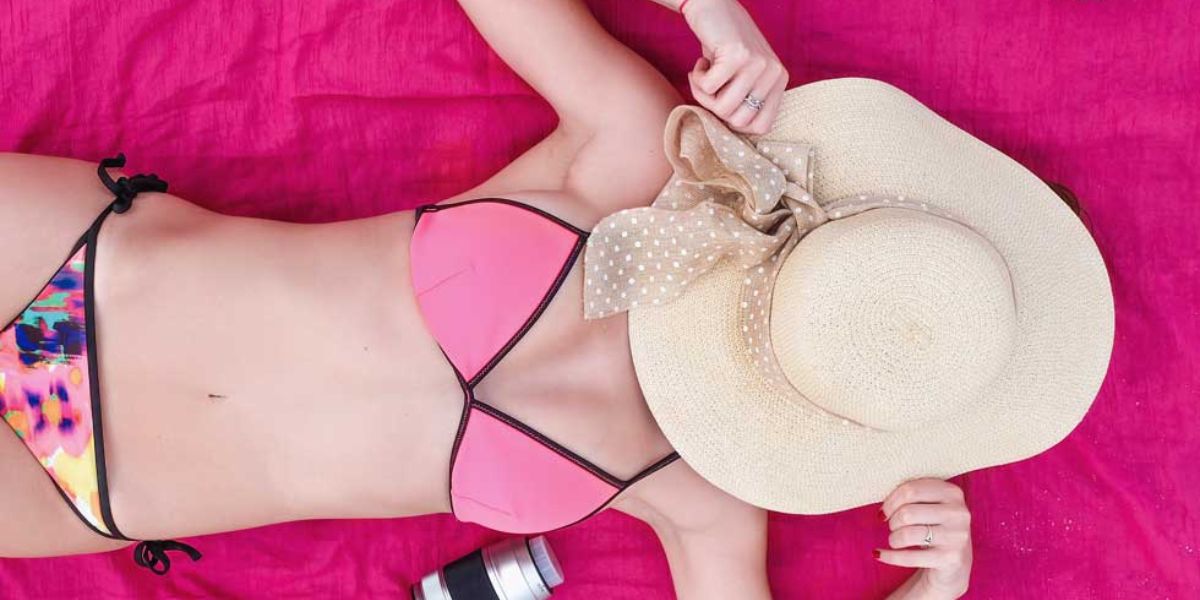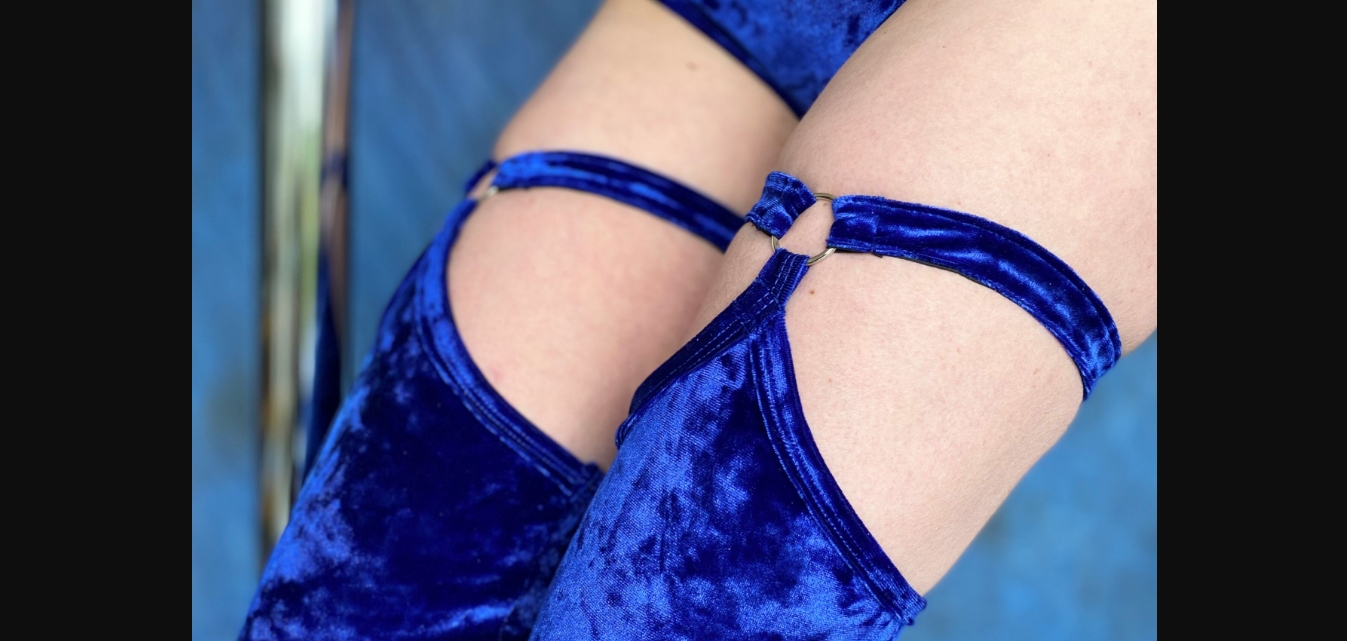Home>How-to Guides>For Women>How To Make A Swimsuit Cover Up


For Women
How To Make A Swimsuit Cover Up
Modified: September 23, 2023
Discover how to make a stylish swimsuit cover-up for women with our easy-to-follow tutorial. Stay fashionable and confident at the beach or poolside.
(Many of the links in this article redirect to a specific reviewed product. Your purchase of these products through affiliate links helps to generate commission for Under-tec.com, at no extra cost. Learn more)
Table of Contents
Introduction
Welcome to the world of DIY fashion! If you’re someone who loves spending time at the beach or by the pool, having a stylish and functional swimsuit cover up is a must. Rather than spending a fortune buying one, why not try making your own? Not only will you have a unique piece that reflects your personal style, but you’ll also have the satisfaction of creating something with your own hands.
In this article, we will guide you through the process of making a swimsuit cover up from scratch. Whether you’re a seasoned sewing enthusiast or a beginner looking to try your hand at a fun project, we’ve got you covered. You don’t need any advanced sewing skills or expensive equipment—just some basic materials and a little bit of time.
By following this step-by-step tutorial, you’ll be able to create a fashionable and versatile cover up that will keep you looking fabulous by the poolside or at the beach. So, gather your supplies, put on your creative hat, and let’s get started!
Materials Needed
Before we dive into the project, let’s gather all the materials you’ll need to create your own swimsuit cover up. Don’t worry, you won’t need anything fancy or hard to find. Here’s a list of the essential items:
- Fabric: Choose a lightweight, breathable fabric such as cotton, chiffon, or linen. Make sure to pick a fabric that is suitable for swimwear or has quick-drying properties.
- Scissors: A good pair of fabric scissors is essential for cutting the fabric accurately.
- Sewing Machine: While you can also sew by hand, using a sewing machine will make the process faster and more efficient.
- Pins: These will help you keep the fabric in place while sewing.
- Thread: Choose a thread color that matches your fabric for a seamless look.
- Elastic: A thin elastic band will be needed to create the waistline or any other desired areas of gathering.
- Measuring Tape: This will help you take accurate measurements for the perfect fit.
- Fabric Marker or Chalk: You’ll need this to mark your fabric before cutting.
- Embellishments (Optional): If you want to add some decorative elements to your cover up, consider getting ribbons, beads, or tassels.
These are the basic materials you’ll need to get started. Depending on your design and personal preferences, you may also require additional items. Now that you have everything ready, let’s move on to the next step: choosing the fabric!
Step 1: Choosing the Fabric
The first step in creating your swimsuit cover up is selecting the perfect fabric. When choosing your fabric, keep in mind that it should be lightweight, breathable, and suitable for swimwear. Here are a few options you can consider:
- Cotton: Cotton is a popular choice for swimsuit cover ups due to its comfort and breathability. Look for a lightweight cotton fabric with a loose weave for better airflow.
- Chiffon: Chiffon is a sheer, lightweight fabric that drapes beautifully. It provides a feminine and elegant look, perfect for a beach cover up.
- Linen: Linen is a natural fabric that is known for its durability and breathability. It has a relaxed and casual look, making it ideal for a beach or pool cover up.
- Mesh: Mesh fabrics are commonly used for athletic wear and swimwear. They are lightweight, quick-drying, and allow for excellent airflow.
Consider the color and pattern of the fabric as well. Solid colors are versatile and can easily be paired with different swimsuit styles. If you prefer a more vibrant look, consider choosing a fabric with a fun and bold pattern.
Once you have decided on the fabric, it’s time to move on to the next step: taking measurements. This will ensure that your cover up fits you perfectly and flatters your body shape. So grab your measuring tape and let’s proceed to the next step!
Step 2: Taking Measurements
To ensure your swimsuit cover up fits you perfectly, it’s important to take accurate measurements before cutting your fabric. Here are the key measurements you’ll need:
- Bust: Wrap the measuring tape around the fullest part of your bust, ensuring it’s parallel to the ground.
- Waist: Measure your natural waistline, which is around the narrowest part of your waist.
- Hips: Measure the fullest part of your hips, keeping the measuring tape parallel to the ground.
- Length: Determine how long you want your cover up to be. Measure from your shoulder down to your desired length, whether that’s above the knee, below the knee, or ankle-length.
When taking these measurements, make sure the tape is snug but not overly tight. It’s best to wear the swimsuit or undergarments you plan to wear with the cover up while measuring to ensure accuracy.
If you want to add gathering or a cinched waist to your cover up, consider taking an additional measurement for the desired gathering area. Measure this at the narrowest part of your waist or where you want the gathering to be.
Once you have all the measurements recorded, you’re ready to move on to the next step: cutting the fabric. Grab your fabric, scissors, and fabric marker or chalk, and let’s get started!
Step 3: Cutting the Fabric
Now that you have your measurements, it’s time to cut the fabric for your swimsuit cover up. Follow these steps to ensure accurate cutting:
- Prepare your fabric: Lay your fabric flat on a clean, spacious surface. Smooth out any wrinkles or folds to ensure an even cutting surface.
- Mark the measurements: Using a fabric marker or chalk, mark the measurements you recorded onto the fabric. Use a ruler or straight edge to ensure your lines are straight and accurate.
- Cut out your pieces: Carefully cut along the marked lines to create the different pieces of your cover up, such as the front and back panels. Pay attention to notches or specific shapes required for your chosen design.
- Consider seam allowances: Depending on your sewing preferences, you may need to account for seam allowances. Seam allowance is the extra fabric you leave beyond your cutting line to allow for sewing seams. Typically, a 1/2 inch (1.27 cm) seam allowance is standard, but you can adjust this to your preference.
Make sure to cut the fabric with clean, sharp fabric scissors to ensure smooth edges. Take your time and double-check your measurements and cuts before moving on.
Once you’ve finished cutting your fabric, you’re ready to proceed to the next step: sewing the body of the cover up. Get your sewing machine, thread, and pins ready, and let’s continue with the project!
Step 4: Sewing the Body of the Cover Up
Now that you have your fabric pieces cut out, it’s time to start sewing the body of your swimsuit cover up. Follow these steps to sew the basic structure:
- Prepare your sewing machine: Thread your machine with a matching thread color and ensure you have the appropriate sewing machine needle for your fabric type.
- Pin the fabric together: Match up the corresponding pieces of your cover up, right sides together. Use pins to secure the edges in place, leaving the necessary openings for arms and neckline.
- Sew the seams: Using a straight stitch, begin sewing the pinned edges together. Start at one end and sew along the edge, removing pins as you go. Backstitch at the beginning and end of each seam for added durability.
- Try it on: Once you’ve sewn the basic seams, try on your cover up to check the fit. Make any necessary adjustments before continuing.
Continue sewing and joining the remaining seams, following your pattern or design. This may include sewing the side seams, hemming the bottom edge, or adding additional details such as a split hem or side slits.
Remember to follow any specific instructions or pattern guidelines you may be using for your cover up. Take your time and sew with precision and care to ensure a professional-looking finish.
Once you have completed the main body of your cover up, it’s time to move on to the next step: adding straps or ties. This will help secure the cover up and add an extra touch of style. Gather your materials and let’s continue!
Step 5: Adding Straps or Ties
Now that you have sewn the body of your swimsuit cover up, it’s time to add the finishing touches by adding straps or ties. This step not only provides functionality but also enhances the overall look of your cover up. Here’s how you can do it:
- Determine the desired strap or tie style: Decide whether you want your cover up to have straps that go over the shoulder, ties that wrap around the neck, or a combination of both. Consider your personal preferences and the design of your cover up.
- Cut out the straps or tie pieces: Using the remaining fabric, cut out the necessary pieces for your chosen straps or ties. Make sure to account for the desired length and width. You can opt for matching or contrasting fabric for a unique look.
- Attach the straps or ties: Pin the straps or ties to the neckline or desired areas of your cover up. Take care to align them evenly and ensure they are securely attached. You can either sew them directly onto the cover up or create loops to thread them through.
- Try it on: Once you have attached the straps or ties, try on your cover up to check the fit and adjust if needed. Make sure the straps or ties are comfortable and sit securely on your shoulders or around your neck.
Adding straps or ties allows you to customize your cover up to your liking. It also provides versatility, as you can adjust them for different looks or levels of coverage.
With the straps or ties successfully added, you’re almost done! Just a few finishing touches remain to complete your handmade masterpiece. Let’s move on to the final step: adding the finishing touches.
Step 6: Finishing Touches
Congratulations, you’re almost done with your DIY swimsuit cover up! The finishing touches will elevate the overall look and add those final details. Here are some ideas to consider:
- Hemming: Neatly finish off any raw edges by hemming them. Fold the fabric over, pin it in place, and use a straight stitch to secure the hem.
- Decorative elements: If you want to add some extra flair to your cover up, consider adding decorative elements such as ribbon trim, lace, or beaded fringe. Sew them onto the neckline, hem, or other desired areas for a unique touch.
- Embroidery or appliqués: Get creative and personalize your cover up by adding embroidery or appliqués. Choose designs that reflect your style or remind you of your favorite beach destinations.
- Additional adjustments: Take a final look at your cover up to see if there are any areas that need adjusting. You can make minor alterations, such as taking in the side seams or adding darts, to ensure the perfect fit.
Remember, the finishing touches are your opportunity to add your personal touch and make your cover up truly one-of-a-kind. Take your time to get these details just right, and don’t be afraid to experiment with different ideas.
Once you’re satisfied with the finishing touches, try on your completed cover up. Admire your handiwork and envision yourself wearing it with confidence at the beach or by the pool. Well done!
Now that you’ve completed all the steps, you have a beautiful swimsuit cover up that you can proudly wear and show off. You’ve not only saved money by making it yourself, but you’ve also unleashed your creativity and sewing skills.
Enjoy the process of making your own unique cover up and have a fantastic time rocking it on your next beach or pool outing. Happy sewing!
Conclusion
Congratulations on successfully creating your very own swimsuit cover up! By following this DIY tutorial, you’ve not only saved money but also added a personal touch to your beach or poolside wardrobe. You’ve discovered the joy of sewing and the satisfaction of creating something with your own hands.
Throughout this process, you’ve learned how to choose the right fabric, take accurate measurements, cut and sew the pieces together, add straps or ties, and add those final finishing touches. These skills can be applied to future sewing projects, allowing you to continue exploring your creativity and adding unique pieces to your wardrobe.
Remember to embrace your personal style and preferences as you embark on future sewing adventures. Don’t be afraid to experiment with different fabrics, designs, and embellishments to create garments that truly reflect your individuality.
Whether you’re lounging by the pool or strolling along the beach, your handmade cover up is sure to turn heads. Enjoy the compliments and the confidence that comes with wearing a garment that is one-of-a-kind.
Lastly, don’t forget to share your creation with others. Inspire your friends and loved ones to embark on their own DIY fashion journey. By spreading the joy of creativity and sewing, you’re helping others discover their own potential and unleash their inner fashion designer.
So, go ahead and flaunt your stylish swimsuit cover up with pride. Let it be a symbol of your creativity, resourcefulness, and self-expression. Happy sewing and enjoy your time in the sun!










